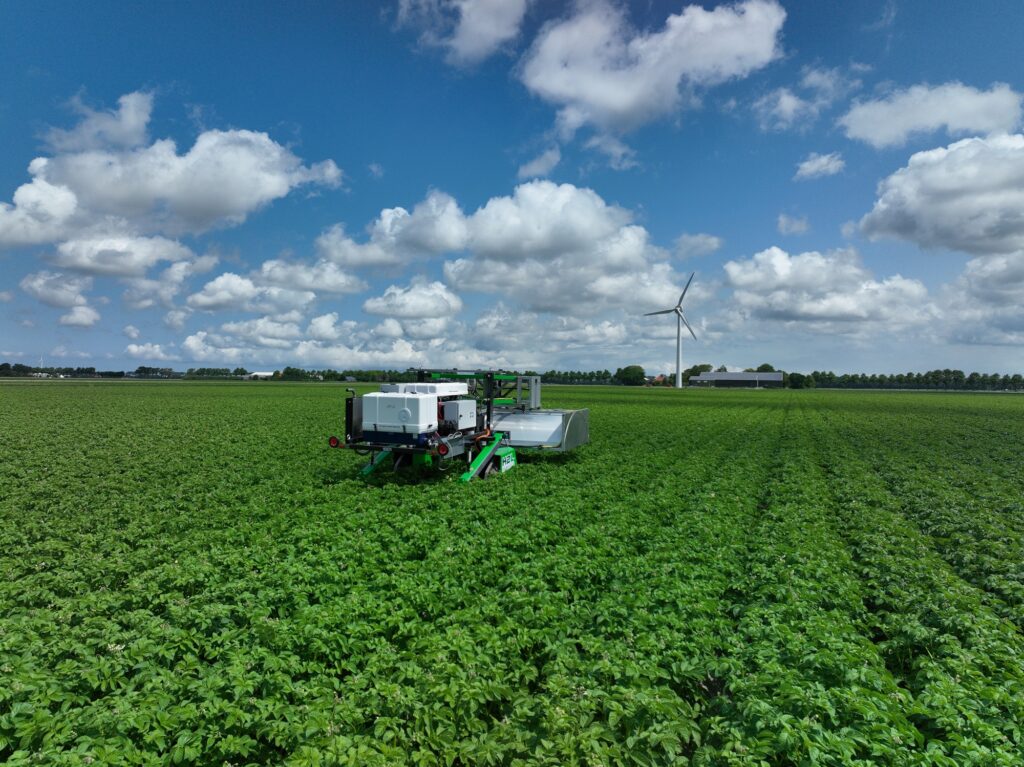
H2L Robotics is set to introduce the PotatoSelector300, an autonomous robot designed to identify diseased potato plants, into practical use next year. This innovative machine marks a significant advancement in agricultural technology, leveraging H2L’s expertise in robotics to enhance crop health management. Known for their successful deployment of Selector robots in tulip farming, H2L Robotics aims to bring similar efficiencies to the potato industry.
The PotatoSelector300 is built on the foundational technology of the tulip robots but represents a completely new development tailored for potato crops. This next-generation robot utilizes advanced software capable of recognizing disease symptoms in plants, promising to transform how farmers manage crop health.
Technological Advancements in Agriculture
The introduction of the PotatoSelector300 comes at a time when precision agriculture is gaining momentum. With over 100 tulip Selector robots already in operation, H2L Robotics has established itself as a leader in the field of disease scouting. The new potato-focused robot is expected to extend these capabilities, offering farmers a powerful tool to combat plant diseases.
According to H2L Robotics, the PotatoSelector300 employs cutting-edge image recognition technology to detect signs of disease at an early stage. This proactive approach allows for timely intervention, potentially saving significant portions of crops from disease-related losses.
Expert Insights and Industry Impact
Industry experts believe that the PotatoSelector300 could significantly reduce the labor and time required for manual disease scouting. Geert Hekkert, an agricultural technology analyst, commented,
“The PotatoSelector300 is a game-changer for the potato industry. It not only reduces the need for manual labor but also increases the accuracy of disease detection, which is crucial for maintaining crop health.”
Meanwhile, Matt McIntosh, a machinery writer, highlights the economic implications, noting that
“By minimizing crop loss due to disease, the PotatoSelector300 can improve the overall profitability for farmers, making it a worthwhile investment.”
Historical Context and Future Prospects
The development of autonomous agricultural robots is not new, but the PotatoSelector300 represents a significant leap forward in terms of capability and application. Historically, disease detection has relied heavily on human labor, which is both time-consuming and prone to error. The advent of robots like the PotatoSelector300 marks a shift towards more reliable and efficient agricultural practices.
Looking ahead, the successful deployment of the PotatoSelector300 could pave the way for further innovations in agricultural robotics. As technology continues to evolve, the potential for robots to take on more complex tasks in farming is vast.
Next Steps and Broader Implications
As H2L Robotics prepares to roll out the first eight units of the PotatoSelector300, the agricultural community is watching closely. The success of these initial deployments will likely influence future investments in agricultural technology, potentially leading to broader adoption across different crop types.
In conclusion, the PotatoSelector300 is poised to revolutionize disease detection in potato farming, offering a glimpse into the future of agriculture. With its promise of increased efficiency and accuracy, this autonomous robot could become an indispensable tool for farmers worldwide.






